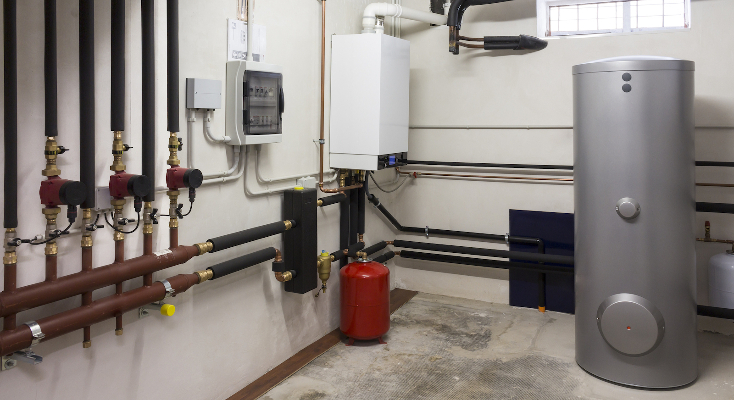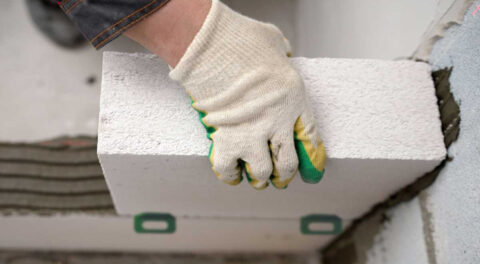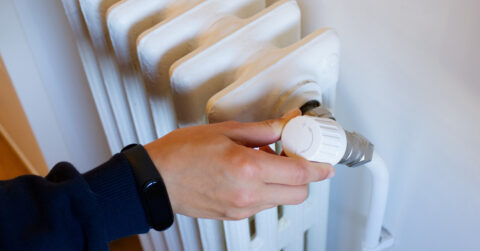Buffer tanks come in a variety of sizes, differ in terms of materials used and insulation techniques, and in terms of placement, you often have a choice of upright and horizontal models. We won't look at that here. But we will look at the different functions that modern buffer tanks can fulfill, because there is quite a lot possible!
Traditional buffer tank
Originally, a buffer tank is used to prevent a heat pump from commuting. Commuting means that the heat pump turns on and off repeatedly for a period of time in short succession. This happens when the generated heat cannot be transferred to the heating system at once, for example. This then happens in short bursts, instead of in one nice smooth motion. This can be solved by using a buffer tank.
Thanks to the large storage tank filled with central heating water, this time the heat is neatly buffered and the heat pump can simply keep running. After which the heat can still be gradually transferred from the buffer tank to the heating system. This is much more efficient and also better for the life of the heat pump.
Heat Storage
The original function of a traditional buffer tank has now been expanded by immediately using the tank for heat storage as well. By installing a larger vessel containing an extra large amount of central heating water, it can store a substantial supply of heat. As a result, the buffer tank has now primarily changed into a thermal battery. Although it is also still used to combat commuting.
This ample storage capacity for heat, which in practice means hot central heating water, is thus specifically intended to be used at a later time. Because the moments when, for example, a heat pump is happily running on freely available solar power, certainly need not always be the period when there is a need for heating. Just as unused power can be fed into the grid or stored in a home battery, it is used to store heat. After all: he who saves something, has something (for later)!
Heat exchanger
A customer may be using or considering using multiple heat sources. Think of a heat pump and additionally solar collectors or PVT panels. Then it is ideal if all these heat sources can collectively store their energy in one and the same place. Well, you can do that by installing a buffer tank with one or more heat exchangers.
The buffer tank is connected to the heat pump via the standard connections. In addition, the pipes of, for example, the solar collectors in which a refrigerant flows can now also be connected to the heat exchanger in the buffer tank. So that the refrigerant can transfer the heat neatly to the central heating water in the buffer tank. So in this way, a nice heat hub is created.
Layered storage
There may also still be a stratified buffer tank. Here the heat is stored in multiple temperature layers(stratification), creating different heat zones that are kept as separate as possible. In this way, central heating water can be provided for different delivery systems, for example LTV and HTV (Low Temperature Heating and High Temperature Heating). A stratified buffer tank can also have an additional function, which brings us directly to the next type of buffer tank.
Sanitary water
Originally, a buffer tank is purely for central heating water. Therefore, for domestic water you need a different type of storage tank. That said, the two functions can indeed be combined. Especially in the case of a buffer tank with stratified storage, an additional (stainless steel) heat exchanger can be a possibility, with which tap water can be heated, especially in the upper and thus warmest part. This time, therefore, tap water flows through the coil, as it must, of course, remain strictly separated from the central heating water located in the buffer tank.
A variant is that there is an additional tank at the top of the buffer tank specifically for domestic hot water, also called tank-in-tank. A buffer tank that can provide additional hot tap water is sometimes called a hygiene buffer tank.
Thanks to the integration of both functions, it suffices to install one (perhaps larger) vessel, instead of two separate tanks. Of course, it is essential that the domestic hot water can be made hot enough, because of the prevention of legionella infections. Whereas for central heating water (with LTV), a lower temperature is sufficient.
Boiler vessel
Okay, according to the letter, this is not a buffer tank at all, but for completeness, the storage vessel or boiler tank should not be missing here. This storage vessel is purely for heating domestic water and thus has nothing at all to do with the central heating system.
Again through a heat exchanger, the heat from the pipes of heat pump, solar collectors, or PVT panels, is transferred to the domestic hot water. Whereby the potable water can never come into contact with the refrigerant or system water (heating water).
A separate boiler tank allows you to keep the storage of hot tap water and hot central heating water separate, for example, if the boiler can be better installed in another location. Or a buffer tank is already present and installing a separate boiler tank is considered the best solution. Another possibility is that a cylinder is sufficient because the customer does not need a buffer tank at all.












